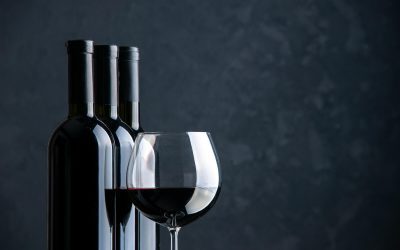Some wines barely touch us… others linger, leaving a trace, a memory, an aromatic melody that persists long after the sip. This phenomenon is called caudalie, and it transforms tasting into a prolonged experience.
In the language of wine, we don’t just talk about taste, color, or aromas: we also talk about time, persistence, and aftertaste. Caudalie is that invisible unit of measurement that tells how many seconds the wine still “sings” on the palate after being swallowed or spit out. A notion that is both sensory and poetic, but also highly revealing of a wine’s quality.
What is a Caudalie?
The word “caudalie” comes from the Latin cauda (“tail”, “extension”) and refers, in oenology, to the duration of the persistence of a wine’s aromas on the palate after tasting. This sensation is also called “length on the palate”.
The word “caudalie” inspired the name of the famous French cosmetic brand Caudalie, which uses grape polyphenols in its skincare products. A way to extend the idea of persistence… onto the skin.
How is a Caudalie Measured?
One caudalie corresponds to one second of aromatic persistence after swallowing (or spitting out) the wine. You count mentally:
“One… two… three…” until the aromas disappear.
- < 3 caudalies: short wine, often simple or young.
- 4 to 7 caudalies: good persistence, satisfying balance.
- 8 caudalies and +: great length, a sign of superior quality and a complex wine.
⚠️ Note, it’s not the taste of alcohol that matters, but the persistence of aromas (fruit, spices, wood, flowers, etc.).
Why is Caudalie Important?
Length on the palate is often considered one of the best criteria for “evaluating a wine, along with its” balance and complexity. The longer a wine persists, the more refined, rich, and expressive it is. It’s a sign that the aromatic molecules bind harmoniously to the wine’s structure (acidity, tannins, alcohol, sugars).
Certain terroirs (gravel, limestone, clay-limestone) offer a minerality or aromatic power that prolongs the sensations. The winemaker’s work, grape ripeness, barrel aging… everything influences this length.
Describing a caudalie also means putting words to a subtle sensation: a form of sensory education, accessible to all, to better feel and better convey one’s tasting emotions.
Some Concrete Examples…
- A young Loire Sauvignon Blanc: 3–4 caudalies.
- An aged Burgundy Pinot Noir: 6–8 caudalies.
- A Bordeaux Grand Cru Classé: 8–12 caudalies, or even more.
- An old Vintage Port or a Château d’Yquem: sometimes 15+ caudalies, with evolving aromas over several minutes.
How to Train your Own Perception of Caudalie?
Here’s a simple idea
1. Listen to the Silence after the Sip
Focus on what remains on the palate: is it fruity? woody? spicy? Does the sensation diminish abruptly or slowly? Do you perceive successive layers?
2. Count Naturally
No need for a stopwatch. Simply count: one… two… three… noting the moment when the aromas truly fade.
3. Compare
Try tasting two very different wines consecutively and observe their respective caudalie. The exercise will make you aware of the diversity of persistence.
4. Note and Verbalize
Keep a tasting journal. Note not only the number of caudalies, but also the nature of the persistence: fruity, mineral, woody, mentholated… The more you express, the more you memorize.
Caudalie is the memory of wine in your mouth. A bit like the last note of a piece of music, it prolongs the emotion, leaves a lasting impression, and takes us on a journey long after the liquid has disappeared.
Learning to sense and name caudalie is to refine one’s palate, to add depth to the tasting experience. It is also, in a way, to respect the winemaker’s work and savor the fruit of their patience.







